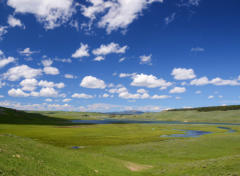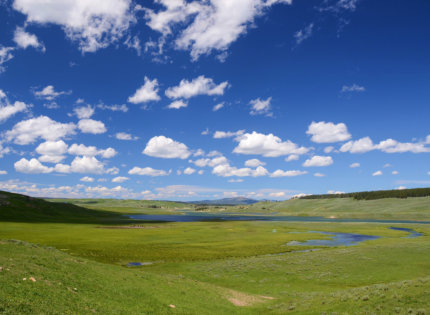
HISTORY ONLINE 24/7/365
GEOGRAPHY PAGE
Geography in U. S. History 2
You may remember learning physical regions of North America in U. S. History I. In U. S. History II, you will need to master the 50 states and several key cities, but also know them by political region. As you learn, remember that while the concept of regions of similar states is useful, where different people draw those regional lines can be different, if not occasionally arbitrary. The regions below are how they are grouped according to the Virginia Standards of Learning, but be aware that some other sources may group states and cities differentlyStates grouped by geographic region:
• Northeast: Maine, Vermont, New Hampshire, Connecticut, Massachusetts, Rhode Island, New York, New Jersey, Pennsylvania • Southeast: Maryland, Delaware, West Virginia, Virginia, Kentucky, Tennessee, North Carolina, South Carolina, Georgia, Florida, Alabama, Mississippi, Louisiana, Arkansas • Midwest: Ohio, Indiana, Illinois, Michigan, Wisconsin, Minnesota, Iowa, Missouri, Kansas, Nebraska, South Dakota, North Dakota • Southwest: Texas, Oklahoma, New Mexico, Arizona • Western (Rocky Mountains): Colorado, Utah, Nevada, Montana, Wyoming, Idaho • Pacific: Washington, Oregon, California • Noncontiguous: Alaska, Hawaii Cities grouped by geographic region • Northeast: New York City, Boston, Pittsburgh, Philadelphia • Southeast: Washington, D.C., Atlanta, New Orleans • Midwest: Chicago, St. Louis, Detroit • Southwest: San Antonio, Santa Fe • Western (Rocky Mountains): Denver, Salt Lake City • Pacific: San Francisco, Los Angeles, Seattle • Noncontiguous: Juneau, Honolulu If you do not already know your 50 states, try some of the U. S. mapping games below!U.S. Mapping Games:
Click to start here with a simple tutorial Drag and Drop by Region Drag and Drop Click on the State Drag and Drop (Harder)

PHYSICAL REGIONS
Looking for the physical regions
of North America from the
Virgina Standards of Learning
for U. S. History I?
Movie Tickets




































HISTORY ONLINE 24/7/365
mrbower.com
GEOGRAPHY PAGE
Geography in U. S. History 2
You may remember learning physical regions of North America in U. S. History I. In U. S. History II, you will need to master the 50 states and several key cities, but also know them by political region. As you learn, remember that while the concept of regions of similar states is useful, where different people draw those regional lines can be different, if not occasionally arbitrary. The regions below are how they are grouped according to the Virginia Standards of Learning, but be aware that some other sources may group states and cities differentlyStates grouped by geographic region:
• Northeast: Maine, Vermont, New Hampshire, Connecticut, Massachusetts, Rhode Island, New York, New Jersey, Pennsylvania • Southeast: Maryland, Delaware, West Virginia, Virginia, Kentucky, Tennessee, North Carolina, South Carolina, Georgia, Florida, Alabama, Mississippi, Louisiana, Arkansas • Midwest: Ohio, Indiana, Illinois, Michigan, Wisconsin, Minnesota, Iowa, Missouri, Kansas, Nebraska, South Dakota, North Dakota • Southwest: Texas, Oklahoma, New Mexico, Arizona • Western (Rocky Mountains): Colorado, Utah, Nevada, Montana, Wyoming, Idaho • Pacific: Washington, Oregon, California • Noncontiguous: Alaska, Hawaii Cities grouped by geographic region • Northeast: New York City, Boston, Pittsburgh, Philadelphia • Southeast: Washington, D.C., Atlanta, New Orleans • Midwest: Chicago, St. Louis, Detroit • Southwest: San Antonio, Santa Fe • Western (Rocky Mountains): Denver, Salt Lake City • Pacific: San Francisco, Los Angeles, Seattle • Noncontiguous: Juneau, Honolulu If you do not already know your 50 states, try some of the U. S. mapping games below!U.S. Mapping Games:
Click to start here with a simple tutorial Drag and Drop by Region Drag and Drop Click on the State Drag and Drop (Harder)

PHYSICAL REGIONS
Looking for the physical regions of
North America from the Virgina
Standards of Learning for U. S.
History I?
Movie Tickets





































































